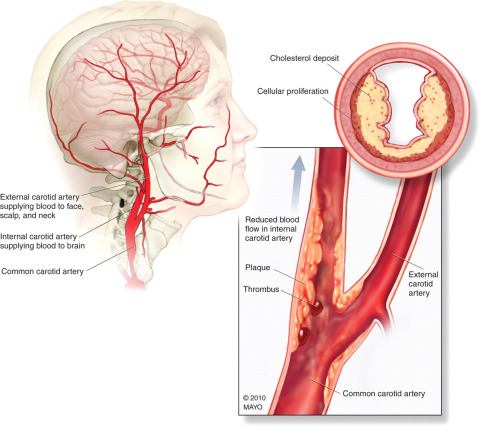
Carotid artery disease (CAD), also known as carotid artery stenosis, is a condition that narrows or blocks the carotid arteries. These arteries, located on either side of your neck, supply blood to your brain, face, and scalp. A blockage in these arteries can significantly reduce blood flow to your brain, increasing the risk of stroke.
Understanding Carotid Artery Disease:- Cause: The primary culprit behind carotid artery disease is atherosclerosis, the buildup of plaque (fatty deposits, cholesterol, and other substances) inside the artery walls.
- Risk factors: Factors that increase your risk of carotid artery disease include high blood pressure, high cholesterol, smoking, diabetes, obesity, and family history of stroke or heart disease.
Silent Threat:
- Often, carotid artery disease progresses without noticeable symptoms, particularly in the early stages.
- You might not experience any warning signs until the blockage becomes severe enough to significantly restrict blood flow.
Potential Symptoms:
If symptoms do occur, they may include:- Transient ischemic attack (TIA), also known as a “mini-stroke” causing temporary weakness, numbness, or speech difficulties that usually resolve within an hour.
- Dizziness or lightheadedness
- Vision problems in one eye, like blurred vision or sudden vision loss
- Difficulty concentrating or speaking
- Weakness or numbness on one side of the face or body
Diagnosis:
Early detection is crucial for preventing stroke. Diagnosis of carotid artery disease may involve:- Physical examination to listen for a whooshing sound (bruit) over the carotid artery, which can indicate a blockage.
- Carotid artery ultrasound to visualize the arteries and assess the degree of blockage.
- Other imaging tests like CT angiography or magnetic resonance angiography might be used in some cases.
Treatment Options:
- Treatment aims to prevent stroke by reducing plaque buildup and improving blood flow.
- Lifestyle modifications:
- Quitting smoking, eating a healthy diet, exercising regularly, and managing other health conditions like high blood pressure and cholesterol are crucial.
- Medications:
- Cholesterol-lowering medications, blood thinners, and blood pressure medications might be prescribed depending on your individual needs.
- Procedures:
- In some cases, minimally invasive procedures like carotid endarterectomy (surgical removal of plaque) or carotid artery stenting (placement of a mesh tube to open the artery) might be recommended to address significant blockages.
- Lifestyle modifications:
Living Well With Carotid Artery Disease:
By following a healthy lifestyle, managing risk factors, and adhering to your doctor’s recommendations, you can effectively manage carotid artery disease and reduce your risk of stroke. Regular checkups and monitoring are essential for ensuring your long-term health.Here are some additional points to remember:
- Carotid artery disease is a serious condition, but it’s often treatable and preventable.
- Early detection and intervention are key to preventing stroke, a leading cause of disability and death.
- If you experience any symptoms suggestive of carotid artery disease, seek immediate medical attention.
